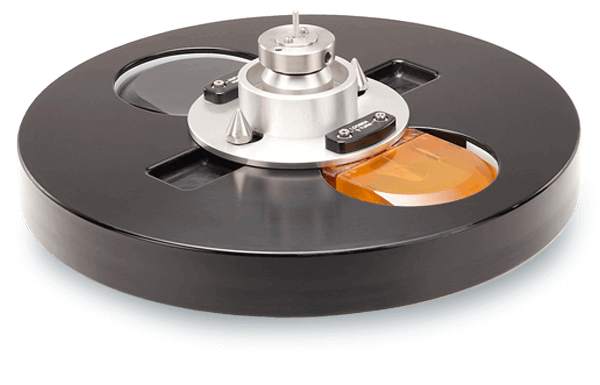Elutriation Centrifugation

Elutriation is a centrifugation technique that aims to separate particles based on size and density. This is achieved through an elutriation rotor.
An elutriation rotor is designed to separate and/or concentrate monodisperse suspensions of single cells or particles according to size (approximately 2 to 50 µm in diameter). Elutriation rotors combine two separation technologies, with each cell in the chamber being acted upon by the two opposing forces:
- Centrifugal force: Driving it away from the axis of rotation. This is the process of sedimentation under the influence of a centrifugal force field.
- Fluid velocity: Driving it toward the axis of rotation—“counterflow elutriation." This is the process of separation by washing.
Separation takes place in a funnel-shaped elutriation chamber. While the rotor is spinning in the centrifuge, a suspension of cells is pumped at a preset flow rate from outside the centrifuge into the rotor to the narrow end of the elutriation chamber. As suspended cells are introduced into the chamber, they migrate according to their sedimentation rates to positions in the gradient where the effects of the two forces upon them are balanced.
Small cells with low sedimentation rates are quickly washed toward the axis of rotation. These cells are washed out of the chamber, up through the rotor, and out into a collection vessel. Somewhat larger or denser cells move through the chamber more slowly and reach equilibrium at the elutriation boundary. The largest or densest cells remain near the inlet to the chamber, where centrifugal force and fluid velocity are high. By increasing the flow rate in gradual steps, successive fractions of increasingly large or dense cells can be washed out of the rotor and collected. Continued incremental increase of the flow rate will finally elutriate all cells from the chamber.

